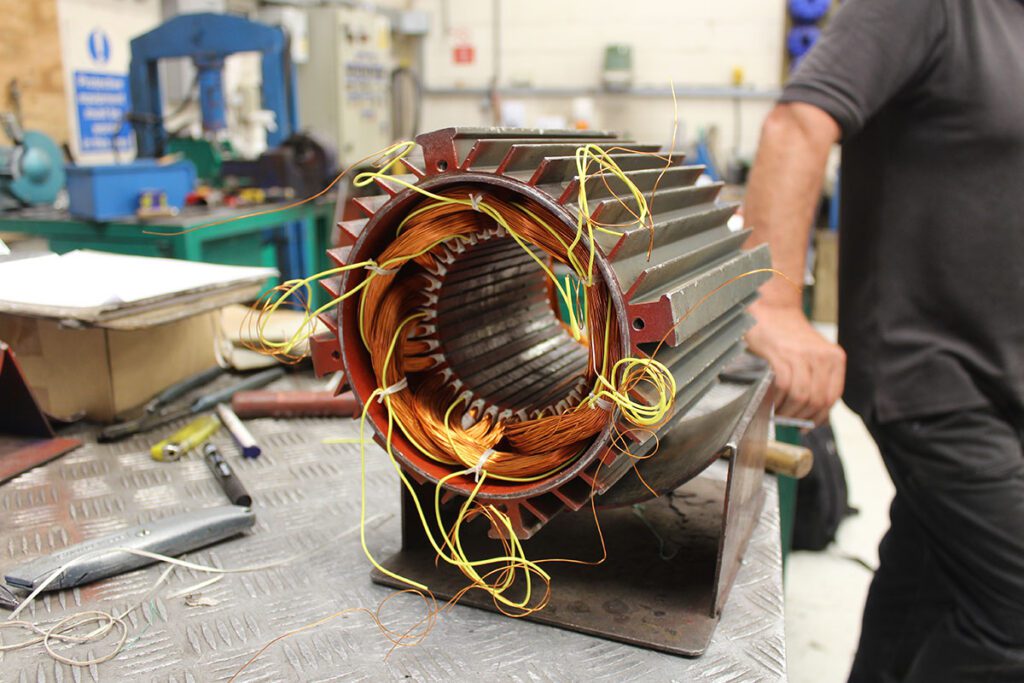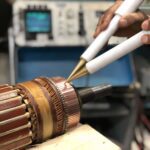Innovations in Motor Replacement Technology
Motor replacement is a vital part of maintaining efficient, high-performing industrial systems. As industries evolve, so too does the technology surrounding motor design, efficiency, and replacement strategies. Innovations in motor replacement technology are transforming industries by enhancing energy efficiency, reducing downtime, improving maintenance practices, and supporting sustainability goals. Below are some of the key technological innovations in motor replacement that are shaping the future of industrial motor systems.
1. Smart Motors and IoT Integration
The integration of the Internet of Things (IoT) and smart technologies into motors is one of the most significant innovations in motor replacement. Smart motors are equipped with sensors and communication systems that allow them to collect and transmit real-time data on their operational status. This includes data on temperature, vibration, energy consumption, and overall health.
- Benefits: These sensors provide valuable insights that enable predictive maintenance, reducing the need for reactive repairs or replacements. By monitoring the motor’s performance in real-time, operators can identify signs of wear and tear or potential issues before they lead to a failure. This allows for more precise scheduling of motor replacements, avoiding costly unplanned downtime.
- Advanced Diagnostics: IoT-enabled motors can be paired with cloud-based analytics platforms, offering remote diagnostics and performance monitoring. This reduces the need for physical inspections and helps optimize motor usage.
2. Variable Frequency Drives (VFDs) and Energy Efficiency
Variable Frequency Drives (VFDs) have become a standard feature in modern motor replacement. VFDs allow for precise control of motor speed and torque, depending on the load demand. By adjusting the motor’s speed to match the requirements of the system, VFDs ensure that motors consume only the necessary amount of energy.
- Energy Savings: VFDs significantly reduce energy consumption, particularly in applications where motor load varies, such as HVAC systems, pumps, and conveyors. This energy efficiency reduces operating costs and extends the lifespan of the motor.
- Reduced Wear and Tear: By reducing motor speed during low-load conditions, VFDs also minimize mechanical stress, leading to lower maintenance costs and fewer instances of motor failure. This technology is becoming increasingly important in motor replacements for industries focused on reducing energy consumption and improving efficiency.
3. Magnetic Motor Technologies
Magnetic motor technologies are emerging as alternatives to traditional induction motors, offering higher efficiency and performance. Permanent magnet synchronous motors (PMSMs), which use permanent magnets in place of windings in the rotor, are one of the most notable innovations in this field. These motors are gaining popularity due to their superior efficiency, compact size, and high torque density.
- High Efficiency: PMSMs are more energy-efficient than traditional motors because they eliminate the need for reactive power, which reduces losses and increases overall efficiency. This makes them ideal for industries where energy consumption is a key concern.
- Compact Design: These motors also have a smaller footprint and lighter weight, making them easier to integrate into space-constrained applications, such as robotics or electric vehicles.
4. Advanced Materials for Motor Durability
One of the most significant innovations in motor replacement technology involves the development and use of advanced materials. New materials are being designed to increase motor durability, reduce energy losses, and extend the lifespan of motors, reducing the frequency of motor replacements.
- High-Performance Alloys: New alloys and coatings are being used to enhance the magnetic properties of motors, improving their performance and resistance to wear and corrosion. This extends the operational life of the motor and reduces maintenance needs.
- Lightweight Materials: Advanced composite materials and lightweight metals are being incorporated into motor designs to reduce the overall weight, improve efficiency, and make motor replacements easier.
5. Wireless Power Transmission
Wireless power transmission is an emerging technology that is revolutionizing how motors are powered and replaced. In some industrial applications, such as robotics and automated machinery, motors are being designed to work with wireless energy systems, eliminating the need for complex wiring systems and reducing mechanical wear on components.
- Benefits: This technology allows for easier integration and replacement of motors in hard-to-reach locations, such as those in mobile robots or underwater systems. Wireless power also simplifies the design of motor-driven systems, making it easier to replace or upgrade motors without extensive reconfiguration of the power supply.
6. Robotics and Automation in Motor Replacement
The automation of motor replacement itself is another key innovation in the industry. Robotics and AI-driven systems are being developed to perform motor replacements with minimal human intervention. These robotic systems can carry out tasks such as motor disassembly, component replacement, and reinstallation with high precision.
- Increased Efficiency: By automating the motor replacement process, businesses can reduce downtime, improve safety, and increase the overall efficiency of the operation.
- AI Integration: AI-driven systems can analyze motor performance and determine the best time for replacement based on historical data, usage patterns, and predictive maintenance algorithms, making motor replacement more proactive rather than reactive.
7. Sustainable and Eco-Friendly Motors
Sustainability has become a critical factor in industrial operations, and motor replacement technology is adapting to these concerns. Manufacturers are focusing on designing motors that are more environmentally friendly, both in terms of energy efficiency and materials used.
- Recyclable Materials: Many modern motors are designed with recyclable materials, reducing waste and supporting the circular economy. For example, manufacturers are using recyclable steel and aluminum in motor construction, as well as designing components that can be easily disassembled for recycling.
- Eco-Friendly Motor Designs: Innovations in eco-friendly motor designs are also focusing on reducing the environmental impact during production. Motors are being designed with fewer rare-earth elements, and alternative materials are being explored to replace more environmentally damaging substances.
8. 3D Printing for Custom Motor Parts
Another innovative development in motor replacement technology is the use of 3D printing for manufacturing custom motor components. This allows for quicker production of replacement parts, especially for obsolete or hard-to-find motor components.
- Quick Turnaround: 3D printing enables the rapid prototyping and production of motor components, reducing downtime during motor replacements and repairs.
- Customization: Manufacturers can create custom parts that meet specific application needs, improving motor performance and efficiency.
Conclusion
Innovations in motor replacement technology are transforming the way industries approach motor efficiency, longevity, and sustainability. From smart, IoT-integrated motors to the use of advanced materials, energy-saving technologies like VFDs, and automation in motor replacement, these innovations are driving greater operational efficiency and reducing environmental impact. As industries continue to evolve, these technological advancements will further revolutionize how motors are designed, maintained, and replaced, offering both economic and ecological benefits.



